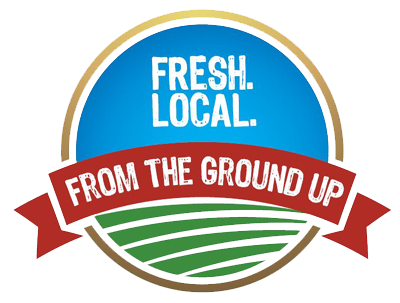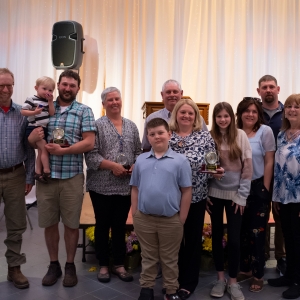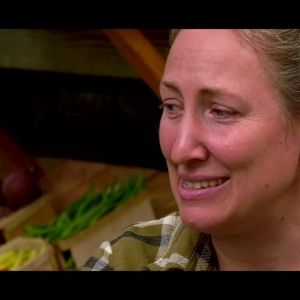Other Ag News: Senate Bill Offers a Pathway to Sustain Local Food Purchasing Program
On March 19, Senator Jack Reed, a Democrat from Rhode Island, led the introduction of the EAT Local Foods Act of 2024 alongside twelve co-sponsors and with 184 endorsements from organizations, farms, and businesses from across the country. The bill seeks to sustain the US Department of Agriculture’s (USDA) Local Food Purchase Assistance (LFPA) program, which launched in 2021 as one of USDA’s Agricultural Marketing Service’s (AMS) initiatives to transform the food system and build resilient regional supply chains.
“If the program continues beyond 2025, I think that local farmers and local processors will grow into a stronger network. Plus, the people that are benefitting from Ohio CAN (Community + Agriculture + Nutrition) and LFPA will continue to have access to the local food they need for themselves, as a business and for the people that are eating it,” said Jeremy Manalo, on behalf of King’s Poultry Farm in Ohio.
“From the perspective of a small processor like myself, we often miss out on programs that might favor the large meat and poultry operations because we’re not doing hundreds of thousands of animals in a given week or month. LFPA has found a way to put our workers to work and feed local people local food,” added Manalo.
Program Background and ImpactLFPA strategically leverages $900 million in funding for domestic food purchases to invest in local food systems and partnerships, address food insecurity, and create economic opportunities for local and underserved producers. Since LFPA is structured as cooperative agreements with states, Tribal governments, and territories, it centers local voices and enables states to be dynamic and responsive to the unique needs of their rural and urban communities. LFPA is unique from other federal food purchasing programs because food purchases are often paired with scale-appropriate technical assistance from community partners that generate benefits beyond increased farm revenue. Already, this model has proven incredibly popular: USDA has entered into agreements with 81 cooperators, including all 50 states, 28 Tribal nations, and 3 territories.
NSAC members across the nation have been active in program development, implementation, and monitoring. Last year, the Wallace Center, an NSAC member, released a report highlighting the results of initial research into LFPA that identified effective models, partner best practices, and preliminary success stories.
More recently, NSAC staff interviewed technical assistance providers, food hubs, farmers, processors, and others to understand the personal impact of the LFPA program.
For example, in Arizona, LFPA funds are managed by two primary partners – Pinnacle Prevention, an NSAC member, and the Arizona Food Bank Network. The Food Bank Network’s “Friends of the Farm”’ program is focused on getting more local foods into existing food pantry programs. Pinnacle Prevention’s “Purchase Local Arizona” program is catalyzing new relationships between growers and markets. To date, $2.4 million has been spent on local produce, meat, and eggs from 227 Arizona producers, farmers, and ranchers from almost every county in the state. This food has reached 110 diverse nonprofit and community-based organizations. One of Pinnacle Prevention’s programs recently connected a farmer to a student dormitory where staff benefit from food purchased by LFPA funds. It exposes participants to new crops, while also providing culturally relevant foods, many of which spark memories and stories among participants.
“It reminded me of how my ancestors practiced their healthier lifestyle and the goodness it brought to their home,” shared one staff member.
“The Hubbard squash reminds me of my grandmother; my grandmother used to have a big farm where they grew corn mainly but some squash and sunflowers,” said another staff member.
“Purchase Local AZ” program farmer, Mozette Humphreys, poses with a delivery of fresh-harvested produce delivered to a nonprofit partner, with LFPA support. Photo Credit | Mozette Humphreys, Residential GrUB (Garden-raised Urban Bounty)State agencies across the country have supported a diverse range of farmers, including those growing specialty crops and grains; producing meat, poultry, dairy, and eggs; and fishing along our coasts. The result is millions of dollars reaching small and midsize farmers nationwide. To date, $104 million has been spent strengthening local and regional markets, including the following investments:
- $9,000,000 in OhioCAN distributed among 164 growers.
- $2,000,000 in Iowa distributed among 234 producers.
- $2,400,000 in Arizona distributed among 227 producers.
- $1,400,000 in Michigan distributed among 119 farmers and 10 farmer cooperatives.
- $1,400,000 spent with New Mexico farmers and ranchers.
- $1,000,000 in Virginia distributed among 84 farmers.
- $500,000 in Maryland distributed among 30 watermen.
- $480,000 in Rhode Island from 93 farmers and fishers.
This is a pivotal moment in AMS commodity program spending, with funding making its way directly to thousands of unique small and mid-scale growers, and more than half of those dollars have been spent with underserved producers. This program provides fresh and healthy food to low-income families but also acts as a farm viability and economic development tool. Although the Farmers to Families Food Box Program initially supported a diverse range of farms, the competitive bidding nature of the program inevitably resulted in it supporting fewer and larger operations.
Creating a Permanent ProgramThe Expanding Access to Local Foods Act of 2024 (S. 3982) would create a permanent local food purchasing program largely modeled off of LFPA. The bill would direct USDA to enter into cooperative agreements with States, Tribes, and territories to purchase food from local, regional, and underserved producers to distribute to community organizations.
The program design would allow flexibility for units of government to directly purchase these foods or sub-award the funding to partners in the region. Food purchases must be local and at least 51 percent of the total value of products purchased shall be from small, beginning, or underserved producers. Moreover, food distribution will remain intended for food insecure communities.
The bill offers some programmatic improvements by:
- creating a funding set-aside for Tribal nations so that they do not have to compete directly with states,
- directing a portion of the funding to support technical assistance and food safety training to increase participation for growers who have not previously participated due to financial barriers, and
- easing pressure on smaller operations by making 50% of the funding available at the time the agreement is signed, rather than administering it entirely on a reimbursement process.
The bill includes mandatory funding ($200 million) and discretionary funding authorized through appropriations ($200 million).
King’s Poultry Farm in Bradford, Ohio. Photo courtesy of Jeremy Manalo.Amplifying Community Impacts
Although thousands of producers and hundreds of thousands of families are intimately aware of LFPA programs operating in their communities, LFPA is largely still considered a new initiative with some states making their first food purchases as recently as last year. As a result, the success of this program is not widely known on Capitol Hill. NSAC and the Wallace Center are actively working to increase awareness of the program and its social and economic benefits.
NSAC hosted a virtual congressional briefing on March 20 to provide a platform for farmers, food hubs, and administrators to share their personal stories in the program. The briefing included the following panelists:
- Jeremy Manalo, Kings Poultry Farm, Ohio
- Thanh Tran, OKC Food Hub, Oklahoma
- Chris Ford, River Bend Food Bank, Iowa
- Mary Greene-Trottier, Spirit Lake Sioux Tribe, North Dakota
The briefing also offered an opportunity for the Wallace Center to highlight their recently published state spotlights.
Iowa LFPA: Together We Grow, Together We Thrive describes the unique partnership between the Iowa Department of Agriculture and Land Stewardship, Iowa Valley Resource Conservation & Development, and the tribal government of the Meskwaki Nation to ensure that all of Iowa’s farmers continue to grow and thrive.
New Mexico LFPA: Building a Local Food System on Efficiency, Trust, and NM Values demonstrates how food systems leaders are working collaboratively to expand market opportunities for socially disadvantaged producers and increase values-based procurement that facilitates positive social impact.
“The Wallace Center is privileged to have a national vantage point on the Local Food Purchase Assistance program and it’s been incredible to witness the creativity and innovation happening in states and tribal communities across the country,” said Susan Lightfoot Schempf, Co-Director, Wallace Center.
“In the short time since its inception, LFPA has demonstrated its potential as a powerful investment in farms and communities. It shows that the federal government can use its significant purchasing power to catalyze new market opportunities for farmers, build new relationships across the value chain, and increase the impact of its other investments in local and regional food systems. We are excited about the potential for it to become a permanent program under the EAT Local Foods Act,” added Lightfoot Schempf.
Want to Take Action?Congressional Members need to hear more details of how this program is benefiting communities, and they need to hear it from the participating farmers, food hubs, community partners, and families that can share their individual stories.
- Reach out to your Member of Congress and let them know how the program impacts your life!
- Ask them to create a permanent program by cosponsoring the EAT Local Foods Act (S.3982)
The post Senate Bill Offers a Pathway to Sustain Local Food Purchasing Program appeared first on National Sustainable Agriculture Coalition.
Signup for the Ag Newsletter
Get the freshest farm news, events and updates from in and around Cattaraugus County, NY at least once a month! Go signup!
Other ways to stay connected:
Get Involved in Farming
Resources for Starting a Farm in Cattaraugus County
Profile of Cattaraugus County soils
Agriculture Career Exploration
Questions about farming? Find out Who to Call











